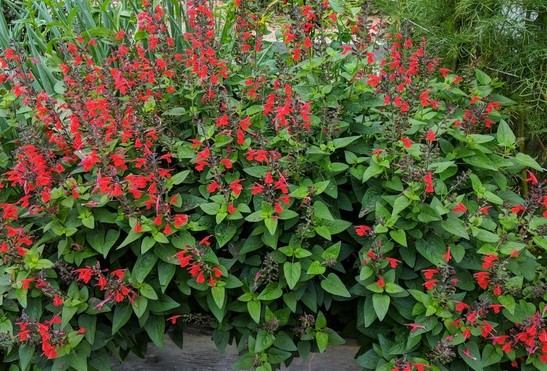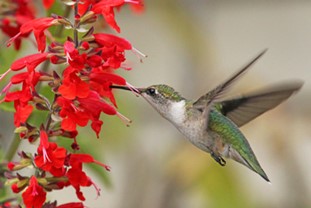Sage Scarlet or Texas Sage
Salvia coccinea red


Characteristics
- Type: Herbaceous perennial
- Family: Lamiaceae
- Zone: 8 – 10
- Height: 1 – 2 Feet
- Spread: 1 – 2 Feet
- Bloom Time: July – October
- Bloom Description: Fire-Red
- Sun: Full Sun – Part Shade
- Water: Medium
- Maintenance: Low
- Suggested Use: Annual
- Flower: Showy
- Attracts: Butterflies, Hummingbirds
- Tolerate: Deer, Drought, Dry Soil
- Texas Native
Culture
Winter hardy to USDA Zones 8-10. Sage Scarlet or Texas Sage should be grown in average, evenly moist, well-drained soils in full sun to part shade. It is best located in full sun in northern areas, but appreciates some light afternoon shade in hot southern summers. It prefers sandy loams with sharp drainage. Plants grown from seed sown directly in the ground after the last spring frost date will bloom late. Set out seedlings or purchased plants after last frost date. Deadhead spent flowers to encourage additional bloom. Sage Scarlet or Texas Sage plants freely self-seed in warm winter climates.
Noteworthy Characteristics
Salvia coccinea, commonly called Texas sage, bloody sage or scarlet sage, is a red-flowered sage. It carries the distinction of being the only U.S. native sage to have red flowers. It is native from South Carolina to Florida west to Texas and Mexico, primarily being found in sandy forested areas, along roads and in waste/disturbed sites in coastal plain areas. It typically grows 1-2’ tall. It generally will survive winter only in frost-free areas. Flowers bloom in loose spikes (racemose inflorescences) from mid-summer into fall.
Problems
No serious insect or disease problems. Susceptible to downy and powdery mildew. Aphids, whiteflies and slugs may appear.
Garden Uses
Scarlet Sage is a great plant for butterfly gardens and pollinator gardens. Use in mixed borders and beds.